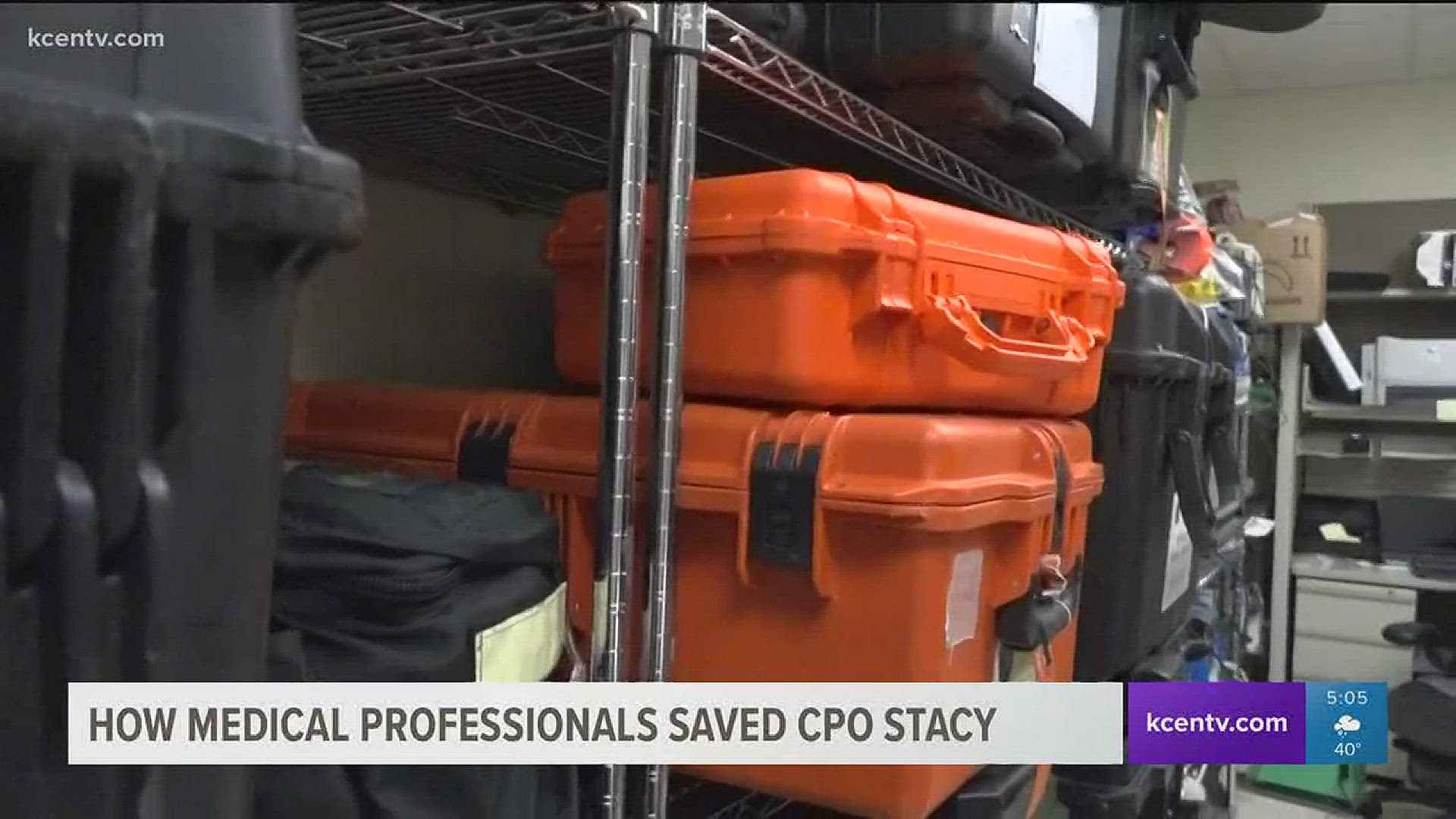Combat medical professionals said Navy EOD Tech Chief Petty Officer Kenton Stacy survived the unsurvivable. Army surgeon Colonel Jennifer Gurney, Chief of Trauma Systems Development, was with Stacy for 49 hours as he underwent multiple surgeries.
Stacy was injured in November while clearing a hospital filled with IEDs near Raqqa, Syria.
"Kenton, if he wasn't a complete specimen of health before all this happened, he would have unlikely survived all of his injuries," Gurney said.
His lungs suffered severe damage from the force of the IED and blasted fragments.
"If it had gone any more lateral, it would have decapitated him. I mean it got everything in the central part of his neck," she explained. Those are just a couple parts of the massive trauma he sustained to his spine, leg, and eyes too. Gurney remembers that day well.
"Then I heard he was coding and not coding and I just thought gosh, if he has a chance, if he can get here," she said. "I was just thinking, I was just praying, if he can make it, I think he's got a good chance," the surgeon said.
In 43 hours, Stacy underwent 13 surgeries.
"So he has everything going against him in terms of getting oxygen to his other organs--the brain, the heart, the kidneys. Because his trachea was disrupted, that's the windpipe that you move air in and out of the lungs," she said.
So, as soon as she saw the numbers. she walked out of the room and made the call to get the world-renowned Burn Flight Team out of the Army's Institute of Surgical Research in San Antonio.
"This was probably the game-changer in Kenton's care," she said, about that call. "Gurney. He said 'is this Gurney?' and I said 'Yes, I need ECMO in Baghdad and I need it quick.'"
The Burn Flight Team has a heart-lung bypass machine called ECMO which helped keep him stable for the 31-hour trip back to the States.
The Navy EOD Tech processed more than 40 units of blood from the time of the injury to his U.S. return. Captain Sarah Matthews and Sergeant First Class Ronald Lange were in the lab during the life-saving blood collection process in Iraq.
"Chaos is the perfect way to explain it I would say," said Matthews.
"It's our goal to save every life that comes to our doorstep alive and the fact we were able to do that with Stacy is just phenomenal," Lange said.
Lange said they started giving Stacy blood components, such as red cells and platelets but says the call was quickly made he needed whole blood as a trauma patient.
In January, during his State of the Union, President Donald Trump recognized Staff Sergeant Justin Peck for bounding into the booby-trapped building and opening his airway, saying Stacy would have died if it weren't for his quick action.
To find out how you can help the Stacy family, click here.


